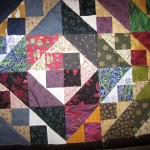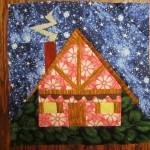I like to mix it up on the back of my quilts. I often have large pieces of fabric that I decide to use on the back of a quilt instead of using new fabrics. Sometimes, often times, I combine them with seriously fun fabrics and just make the back an improvisational piece.
Sometimes the quilt backings are only a couple of inches larger around the edges than the actual quilt. I am going to quilt this myself, so I need to center it just so. I don’t want to find that the back is too short on any of the edges. I have done this, needless to say. I have gotten a quilt back all pinned and found that I was just a little off on the backing. So frustrating. It’s not just a mistake of the inexperienced, there are plenty of us experienced sewists doing this same foolish mistake.
With my most recent quilt, I decided I would not make this mistake again. I recently purchased a sit-down Bernina Q20, and I am going to try and quilt more of my own quilts.
To mark the center of the table, I used to wooden skewers and taped them in an X on the table center. The table center doesn’t have to be exact, because you’re not trying to find the center of the table. So, just eyeball that.
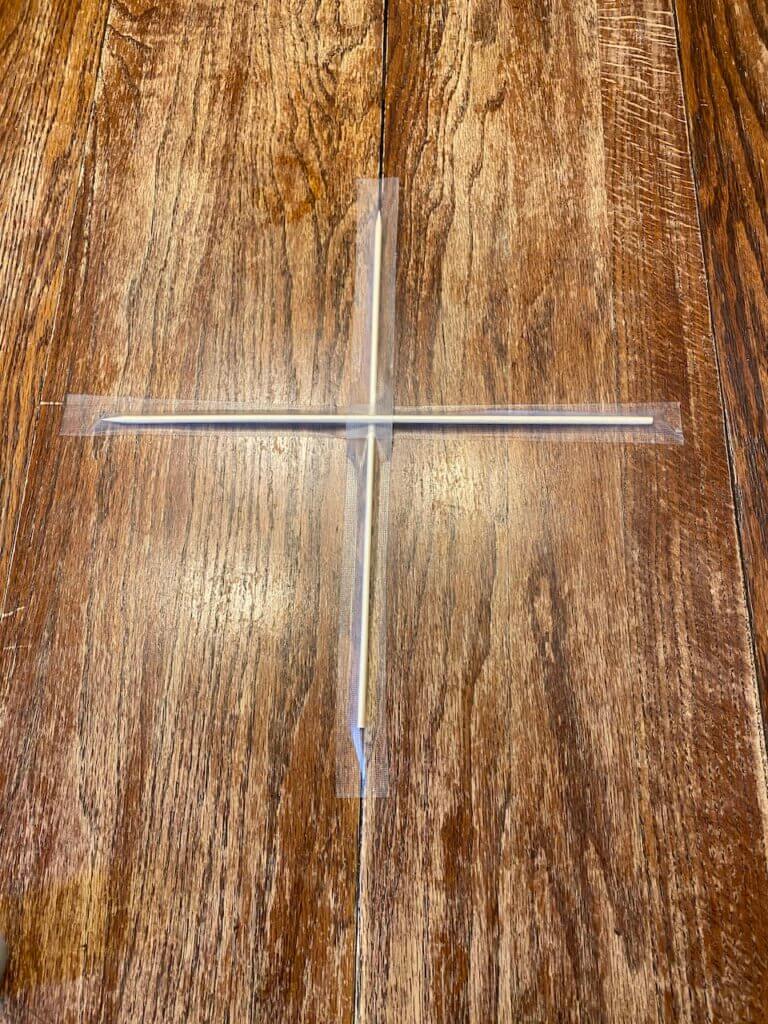
Once your quiltback is complete, find the center of that by folding it in half and then in half again and press that spot with an iron.
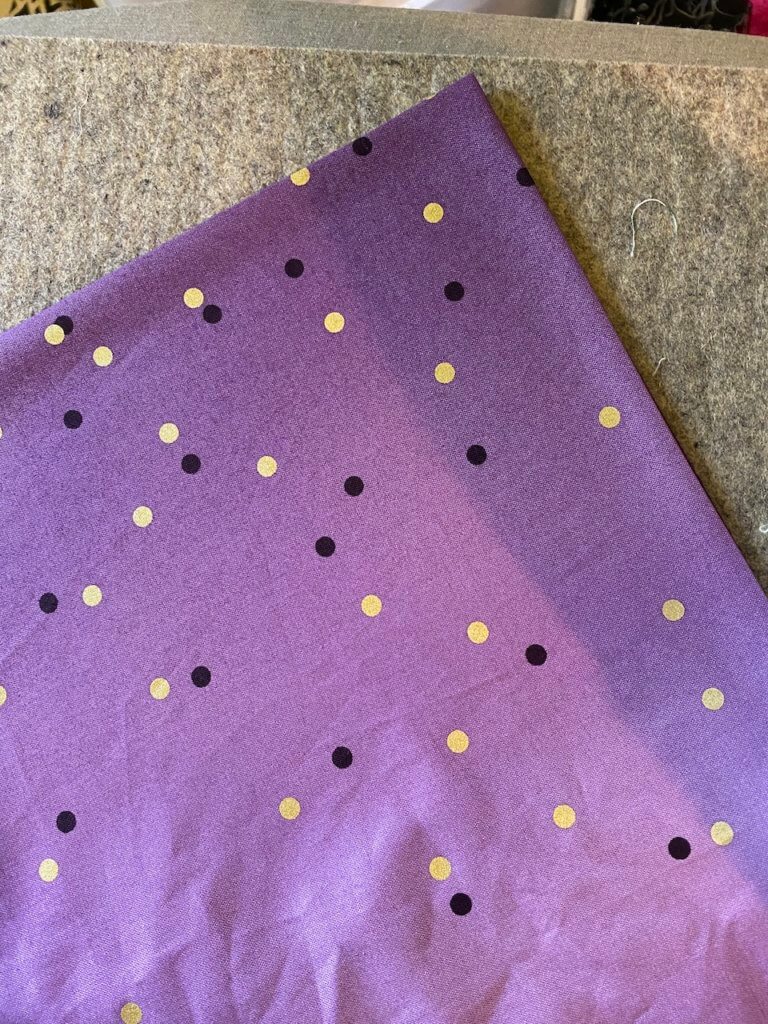
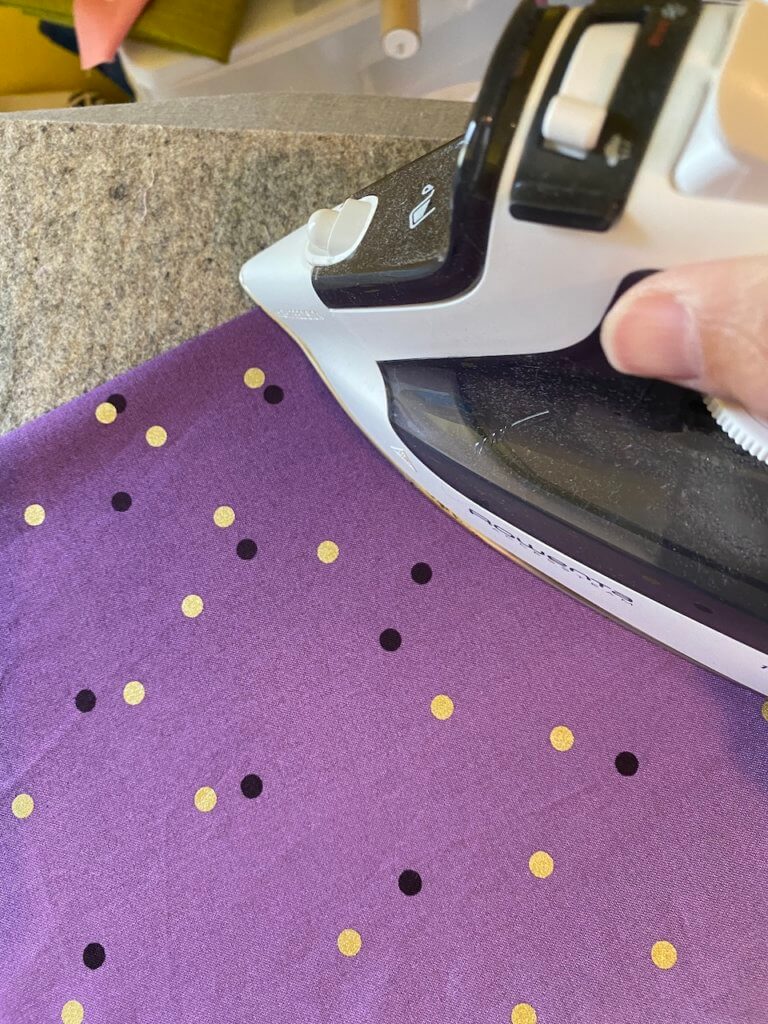
Now the center of your quilt back is marked. Lay the quilt back wrong side up on the table and lay the cross of the creases exactly over the cross of the skewers. If your table is large enough you should tape the edges of the quilt back to the table so that it doesn’t move.
Now, throw your batting over the quiltback. My batting is always so much larger than the back that it doesn’t need to be exact. If your batting is the exact same size as your back then you will need to repeat the procedure above with the batting.
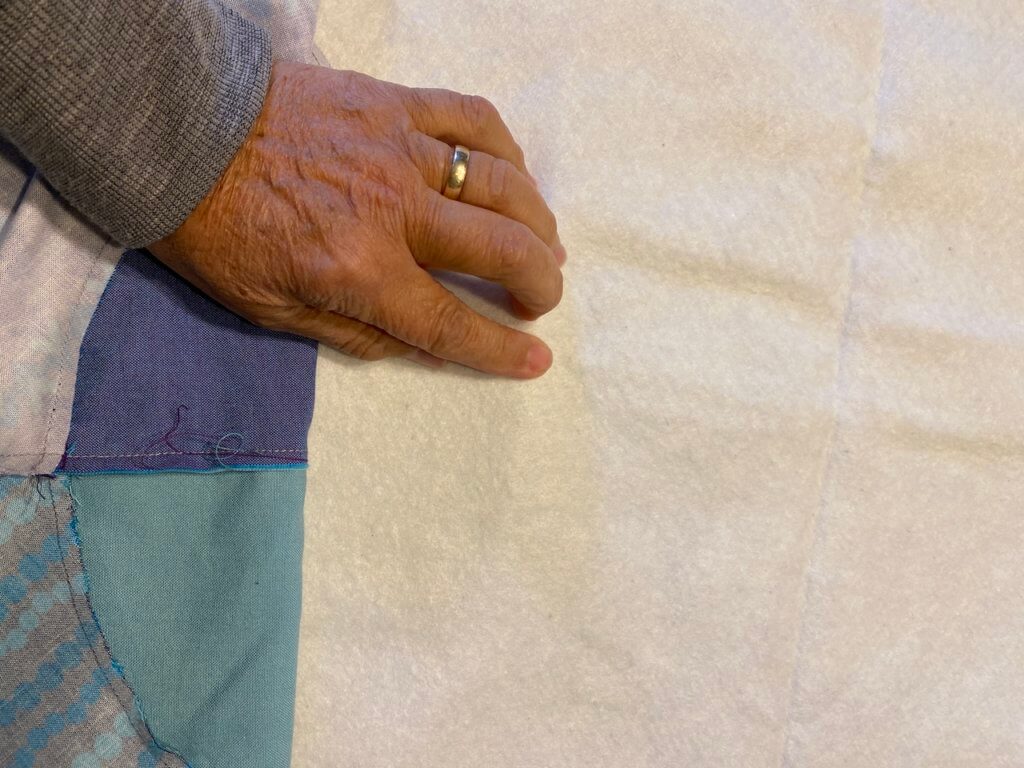
Now find the center of your quilt. I marked the center of my quilt with a safety pin and laid it over the batting. Make certain that you can feel the intersection of the wooden skewers through the layers and that the center of your quilt is right over the intersection. Smooth the top and all three layers from the center outward. As you’re doing this be careful to reassess the centers and always be checking that your edges are good. Make sure that you have more of the quilt back sticking out beyond the quilt top.
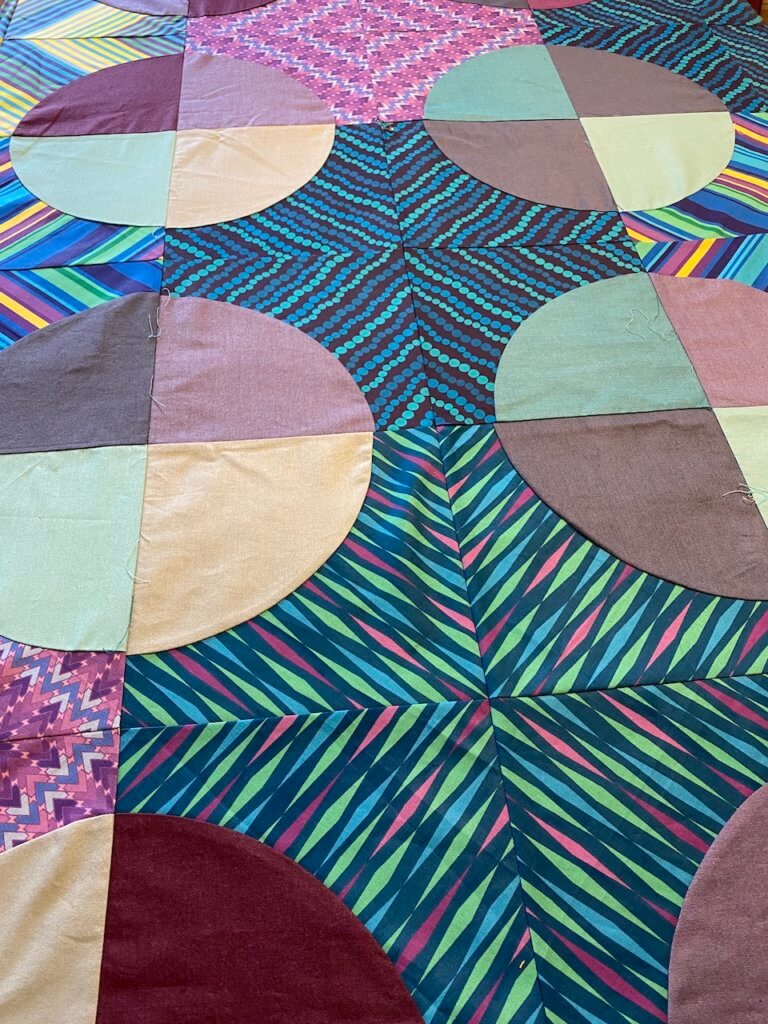
Now make sure to pin, pin pin! I always use a lot of pins when I am pinning layers together. You should never have a spot that doesn’t have a pin as you lay your hand over the quilt top, with your fingers spread. In other words, if you aren’t touching a pin with your fingers spread out you are not pinning enough. I go even beyond that and pin about every 2-3 inches. Successful quilting is in the basting.
